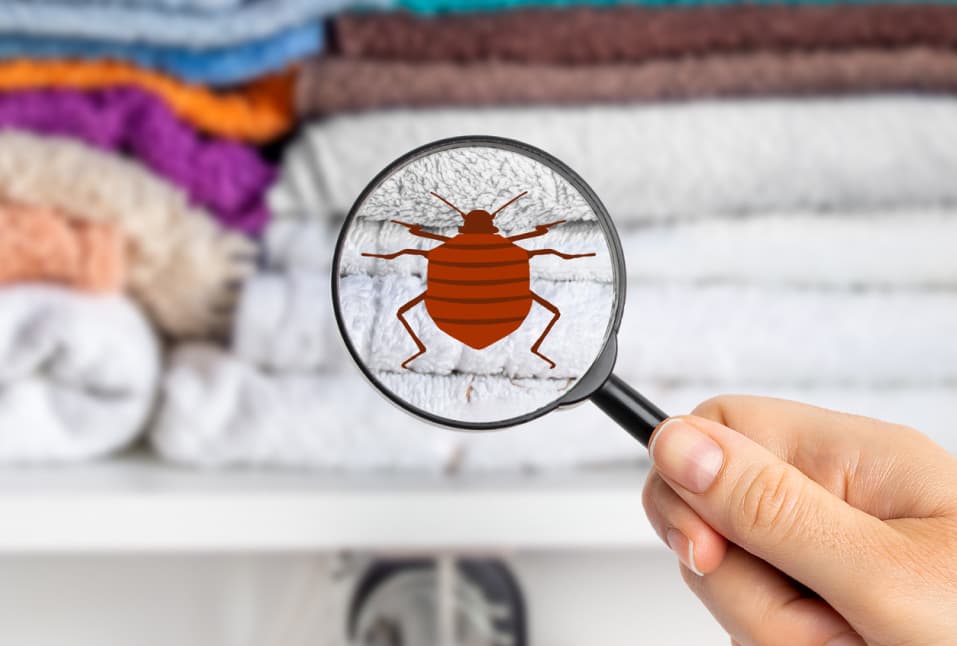Premier Bed Bug Exterminator: DC Exterminator for Effective Treatment
Premier Bed Bug Exterminator: DC Exterminator for Effective Treatment
Blog Article
Exploring the Scientific Research Behind Bed Insect Warmth Treatments as a Sustainable Parasite Administration Approach
In the world of bug management, the mission for sustainable and efficient solutions stays a constant search. One such technique that has actually gained grip recently is the use of warmth treatments to deal with bed pest infestations. By using the science behind thermal death factors for these persistent bugs, warmth treatments use an encouraging alternative to traditional chemical-based techniques. The intricacies of exactly how warm properly eliminates bed insects and the broader ramifications for lasting pest management methods make this a subject worth discovering further.
Bed Pest Warmth Therapy Refine

Thermal Death Factor for Bed Insects
Exposing bed insects to elevated temperature levels past their thermal tolerance array is important for achieving efficient eradication in warm therapy processes. The thermal fatality factor for bed bugs describes the temperature level at which these insects can not endure. Research suggests that bed pests start to die when exposed to temperatures over 113 ° F(45 ° C) for a sustained period. As the temperature level increases, so does the mortality rate of bed insects. At around 118 ° F(48 ° C ), bed pests start to pass away swiftly, with a mortality rate of virtually 99% within minutes of exposure. This shows the sensitivity of bed bugs to heats and highlights the effectiveness of heat treatments in getting rid of infestations. By reaching and preserving temperature levels over the thermal death factor for bed bugs, insect administration specialists can ensure extensive removal of bed pest populaces, consisting of hard-to-reach locations where chemical therapies may be less effective. Comprehending the thermal fatality factor for bed bugs is necessary for applying effective heat treatment strategies and achieving sustainable parasite management outcomes.
Benefits of Heat Treatments
Having established the crucial thermal death factor for bed insects, it is necessary to now explore the substantial advantages that warmth treatments supply in successfully removing these resilient parasites. When compared to conventional chemical methods, warmth therapies present a number of key advantages. Among the primary benefits is that heat can pass through deep into splits and gaps where bed pests hide, ensuring that also one of the most hard-to-reach areas are warmed to lethal temperature levels. This thorough strategy not only eliminates real-time insects yet also targets bed insect eggs, preventing future problems.
In addition, heat treatments are non-toxic and eco-friendly, making them a sustainable insect management technique. Unlike chemical pesticides, warm therapies do not leave unsafe deposits that can pose risks to human health or the atmosphere. This element is specifically vital in delicate settings such as health centers, schools, and houses where chemical usage might not be preferable.
In addition, warmth therapies have a high success price in getting rid of bed insect invasions in a single treatment, reducing the need for multiple visits and minimizing disruption to owners. This performance not just saves time and money but also gives assurance to those taking care of bed insect problems.
Effectiveness of Warmth Therapy

Research researches have continually demonstrated the efficiency of heat therapies in achieving a high price of bed insect death. Correctly performed heat therapies can reach all the gaps and cracks where bed insects might be harboring, ensuring a detailed approach to extermination. Warm treatments Learn More Here have actually the added advantage of eliminating bed bug eggs, which are usually resistant to traditional chemical therapies. On the whole, the find out this here effectiveness of warm therapies in eradicating bed bug invasions makes them a lasting and trusted insect administration method.
Sustainable Insect Management Advantages
Implementing sustainable parasite monitoring methods supplies lasting advantages for both the environment and public health. By making use of techniques such as heat therapies for bug control, we can minimize the reliance on unsafe chemical pesticides that can have negative effects on communities and human wellness - bed bug treatment. Lasting pest monitoring methods help in maintaining biodiversity by targeting particular pests without damaging non-target organisms, therefore preserving a well balanced environment
In addition, sustainable parasite administration techniques contribute to the total health and wellness and health of the public. By decreasing direct exposure to toxic chemicals made use of in traditional bug control methods, warm therapies offer a more secure alternative for bug administration in domestic, business, and public spaces. This reduction in chemical use also assists in protecting against pesticide residues from polluting water, dirt, and air, protecting ecological top quality.
Conclusion
To conclude, bed insect warmth treatments have been shown to be a reliable and lasting insect administration approach. The thermal fatality factor for bed bugs makes them vulnerable to warm therapies, which have countless benefits over traditional chemical treatments. The effectiveness of heat treatments in getting rid of bed insect invasions while decreasing ecological influence highlights the possibility of this method as a sustainable solution for pest control.
The bed bug heat treatment process involves raising the temperature within infested locations to a degree that properly gets rid of bed insects and their eggs. By getting to and preserving temperatures above the thermal death point for bed pests, parasite monitoring specialists can make certain thorough removal of bed insect populations, including hard-to-reach locations where chemical therapies might be less effective. One of the primary advantages is that warmth can pass through deep right into fractures and gaps where bed bugs conceal, ensuring that even the most hard-to-reach areas are heated to deadly temperature levels. Unlike chemical therapies that may leave behind resistant populaces, warm treatments offer a safe and eco pleasant remedy that can permeate deep into furnishings, walls, and other hard-to-reach locations browse around this site where bed bugs hide.
The thermal death factor for bed insects makes them susceptible to warmth treatments, which have numerous benefits over standard chemical treatments.
Report this page